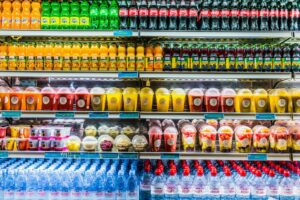KTN has published a report on ‘Networks and Optimal Control for a Circular Economy’ looking at the role of maths in plastic reuse.
Solving the plastic waste crisis is a hugely complex task. Plastics are used for good reason and in a multitude of products, but the end of life and long term sustainability of such materials has been grossly overlooked. There is a now a need to make rapid and long term changes to when and where we should use plastics; how we value them as a material – looking for second (and multiple) life applications; how we design them to utilise the best of human behaviour, and how we hone business models and systems to use as little of them, and capture the most from them, throughout their life cycles. The complexity means that no one person or organsiation has the answer and changes in one part of the system has implications on the others.
KTN and the UK Circular Plastics Network are hosting a 90 minute virtual forum on 11th November 2020 to consider the use of mathematical science in supporting plastic reuse. This event is to raise the profile and share knowledge on the kinds of opportunities that mathematics and modelling can have to gain insight into such topics as logistics, behaviour change and business models. It will be of value to anyone in the plastics value chain from those in retail, waste management and polymer converters, through to those looking at re-use in the fast moving consumer goods sector and those moving to alternative materials.
Below is the foreword from a summary report to the mathematical science and circular economy workshop at the Isaac Newton Institute in February. View the report.
In 2019, the UK Government made a bold (and legally binding) commitment to reducing greenhouse gas emissions to net-zero by 2050. In our journey to net-zero, moving to renewables across the globe will only address 55% of greenhouse gas emissions. To tackle the remaining 45%, transitioning to a circular economy, diet shift, emerging innovations and carbon capture and storage are all required. This transition from a linear to a circular economy offers a wide range of potential benefits (to the environment and economy):
- Increased – sustainable use of resources, resource efficiency, material security, business resilience, net job creation, robust supply chains
- Reduced – pollution (with associated health benefits), CO2 emissions, reduced waste.
This requires ability to configure whole-systems, change practices and behaviour, deploy appropriate solutions, AND understand how these impact the system. A circular economy is a systemic approach to economic development designed to benefit businesses, society, and the environment. In contrast to the ‘take-make-waste’ linear model, a circular economy is regenerative by design and aims to gradually decouple growth from the consumption of finite resources.
Within this larger ‘system of systems’ are multiple subsystems or organisational systems where whole value chains exist and interlink. At present, organisations that are redesigning themselves to be circular through product and service design, within their own operations and across their value chain can only go so far as we still exist within a linear economy. No organisation, region or country has achieved 100% circularity yet. There is a fine balance between transforming the wider system from a linear to a circular one whilst unlocking the circular potential across these subsystems that are interlinked.
Collectively, there is a need to use a wide variety of tools and instruments to create the right environment for this systemic shift such as finance, policy, education, alternative business models. The mathematical sciences are a broad set of approaches and methods that can be used to help unlock and de-risk the commercialisation and deployment of some of these business models such as last leg logistics for example.
The mathematical sciences are unique in their adaptability in tackling challenges at sub-system, component-level and broader, systems-level challenges; and providing the language which unites them. Sometimes a broader mathematical framework for describing systems-level can open our eyes to how system-level dynamics behave. For example, complexity science applied to interacting relationships, or entropy arguments used to describe holistic resource flows, or the language of mathematical uncertainty to account for behaviour and stochastic processes. At the subsystem level, the mathematical sciences can provide a rigorous quantitative backbone for modelling logistics in circular cascades, or rationalising design decisions in new product/process offerings.
-KTN’s Matt Butchers and Emma McKenna
KTN and the UK Circular Plastics Network hosted a 90 minute forum on 11th November to consider the use of mathematical science in supporting plastic reuse.
This virtual forum aimed to introduce some of the challenges in plastics circular economy practices and adoption, and provided some insight into the role the mathematical sciences might have in this important and exciting area. This forum:
- Presented some of the ideas discussed at the Isaac Newton Institute Circular Economy session.
- Focused on some key mathematical science / circular economy overlap areas.
- Initiate some potential collaborations between business and the mathematical sciences in this area.




